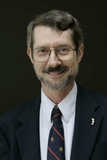 Expanding the role of bicycle travel in urban areas has been government policy in developed nations for several decades. As Lawrence Solomon wrote in a recent piece in Canada’s Financial Post, “At no expense to taxpayers, the bicycle took cars off the road, easing traffic; it saved wear and tear on the roads, easing municipal budgets; it reduced auto emissions easing air pollution; it reduced the need for automobile parking, increasing the efficiency of land use; and it helped keep people fit, too.”
Expanding the role of bicycle travel in urban areas has been government policy in developed nations for several decades. As Lawrence Solomon wrote in a recent piece in Canada’s Financial Post, “At no expense to taxpayers, the bicycle took cars off the road, easing traffic; it saved wear and tear on the roads, easing municipal budgets; it reduced auto emissions easing air pollution; it reduced the need for automobile parking, increasing the efficiency of land use; and it helped keep people fit, too.”
Yet despite these ostensible benefits, something of a “bikelash” is under way, in cities that include Amsterdam, several major cities in China, London, Singapore, and elsewhere. As The Economist reported in “The Bikes That Broke Free” (Dec. 23, 2017), one emerging problem is dockless bike-sharing systems that have plagued cities with bikes left all over the place. Amsterdam has banned such systems, and a growing number of Chinese cities have called a halt to any expansion of existing systems.
Solomon—once a strong advocate of urban bicycling—has concluded that bicycling today “is a mixed bag, usually with more negatives than positives. In many cities, bike lanes now consume more road space than they free up; they add to pollution as well as reducing it; they hurt neighborhoods and business districts alike; and they have become a drain on the public purse.”
Many of his examples come from Europe and Australia, where cities have been far more aggressive in promoting bicycle use than is typical in the United States. Transport for London has spent large sums to create a “cycle super highway” that has taken away traffic lanes and increased traffic congestion, sparking a significant backlash. Paris is spending €150 million on cycling infrastructure, Amsterdam €120 million just on bike parking spots, and Melbourne is under way on a $100 million cycling plan.
Negative health impacts are an unexpected consequence of aggressively expanded urban bicycling, Solomon notes. Congestion caused by taking away traffic lanes leads to idling traffic, which increases emissions. Cyclists are the most-exposed to PM2.5 soot from idling vehicles. A study by the London School of Medicine found that cyclists in London have 2.3 times more inhaled soot than walkers, because “cyclists breathe more deeply and at a quicker rate than pedestrians while in closer proximity to exhaust fumes.”
Although Solomon doesn’t mention cyclist deaths and injuries due to driving in close proximity to motor vehicles, my traffic engineer friends tell me (off the record) that they are appalled by the proliferation of bike lanes on major U.S. arterials that, because they are a vital supplement to the freeway system, increasingly have traffic signal timing aimed at providing rolling green lights and 40-45 mph speeds. They would much prefer that bicycles be kept away from such high-volume traffic arteries.
Solomon also points to concerns of local merchants who depend on metered street parking for their customers. In some cities, bike lanes have replaced street parking. The result is to replace a multi-function lane (traffic lane during AM and PM peaks, parking and truck delivery space at other hours) with “a single-function piece of under-used pavement.” Cities lose the former parking meter revenue, and in some cases have to build expensive parking structures nearby to replace the street parking.
Lawrence Solomon is an environmentalist whose career with Canada’s Energy Probe Research Foundation spans several decades. His piece raises serious questions, and is well worth reading and pondering. (http://business.financialpost.com/opinion/lawrence-solomon-ban-the-bike-how-cities-made-a-huge-mistake-in-promoting-cycling)
(This article first ran in the February 2018 issue of Surface Transportation Innovations.)
 Email this author
Email this author
- The Most Progressive Budget in Virginia’s History - December 21, 2019
- When is a Clean Water Act Permit Needed? - December 21, 2019
- Should U.S. Consider Modern Monetary Theory to Improve Economy? - December 21, 2019
